The Biology Bus: A Q&A with Nancy Foster Scholarship Alumna Dr. Nyssa Silbiger
By Elizabeth Weinberg
September 2016
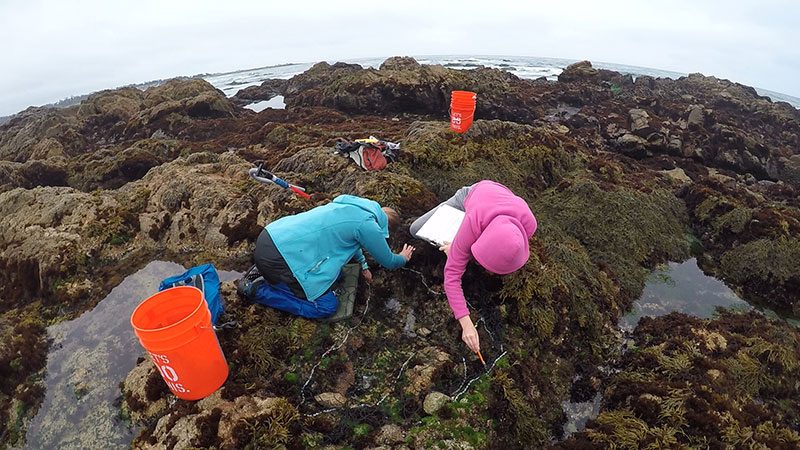
Here’s a conundrum: you have one summer to study intertidal organisms in 12 sites up and down the West Coast. How do you do it?
For former Nancy Foster Scholar Dr. Nyssa Silbiger and her colleagues Piper Wallingford and Savannah Todd, a camper van is the key. This summer, they’ve packed all their research gear into the Biology Bus and have taken off for their national marine sanctuaries. Together, they’re assessing the impacts of climate change on intertidal marine communities along the West Coast.
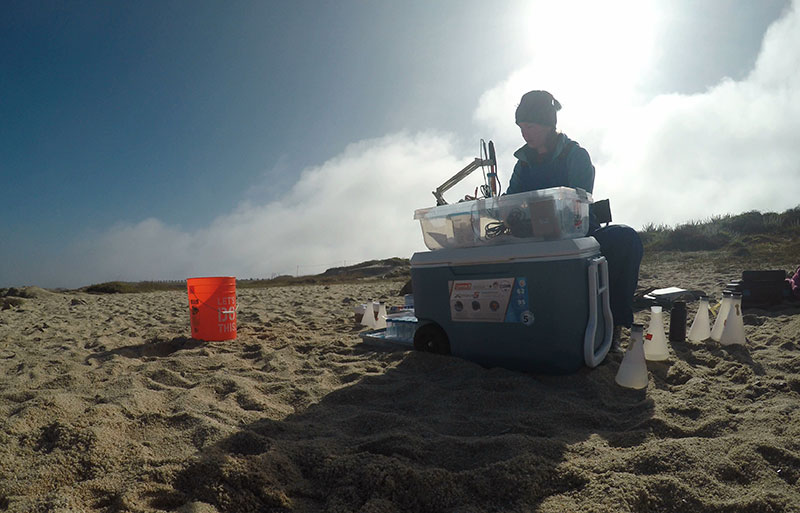
What are you and Piper studying?
Both of us are working in rocky intertidal ecosystems for this trip. I am using tidepools, depressions in the rock that can vary from the size of a coffee mug to a bathtub that are filled with marine plants and animals, to study how different types of organisms can control the chemical environment around them, just by breathing. Understanding how plants and animals change their environment can help us to better understand how climate change, which is also changing the chemistry of the water, will impact our coastal marine ecosystems all over the world.
Piper is studying predator/prey interactions. She looks at how climate change is shifting the vertical distributions of predator species (sea stars and carnivorous snails) and their prey (mussels and barnacles) within the intertidal.
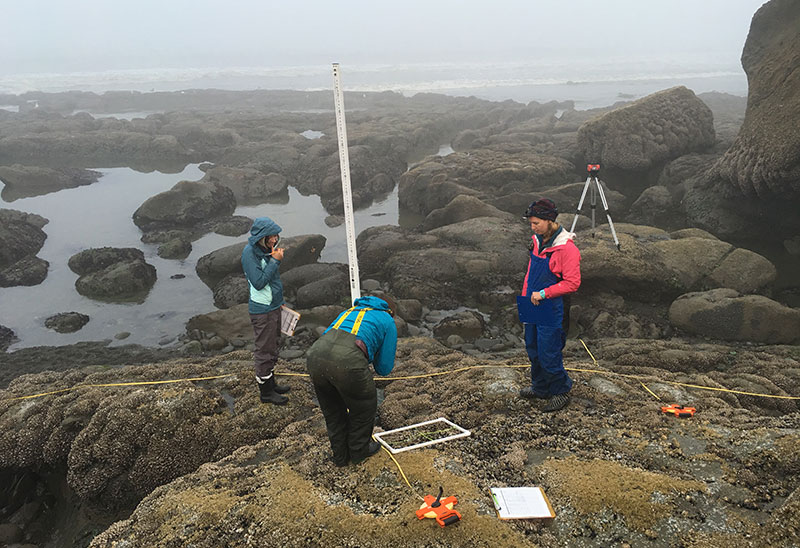
What is the Biology Bus?
The Biology Bus is our amazing camper van that we have been living and working out of since early July. It’s a 2002 Eurovan Winnebago Camper that was donated to us by GoWesty; we have affectionately named her “Becky.”
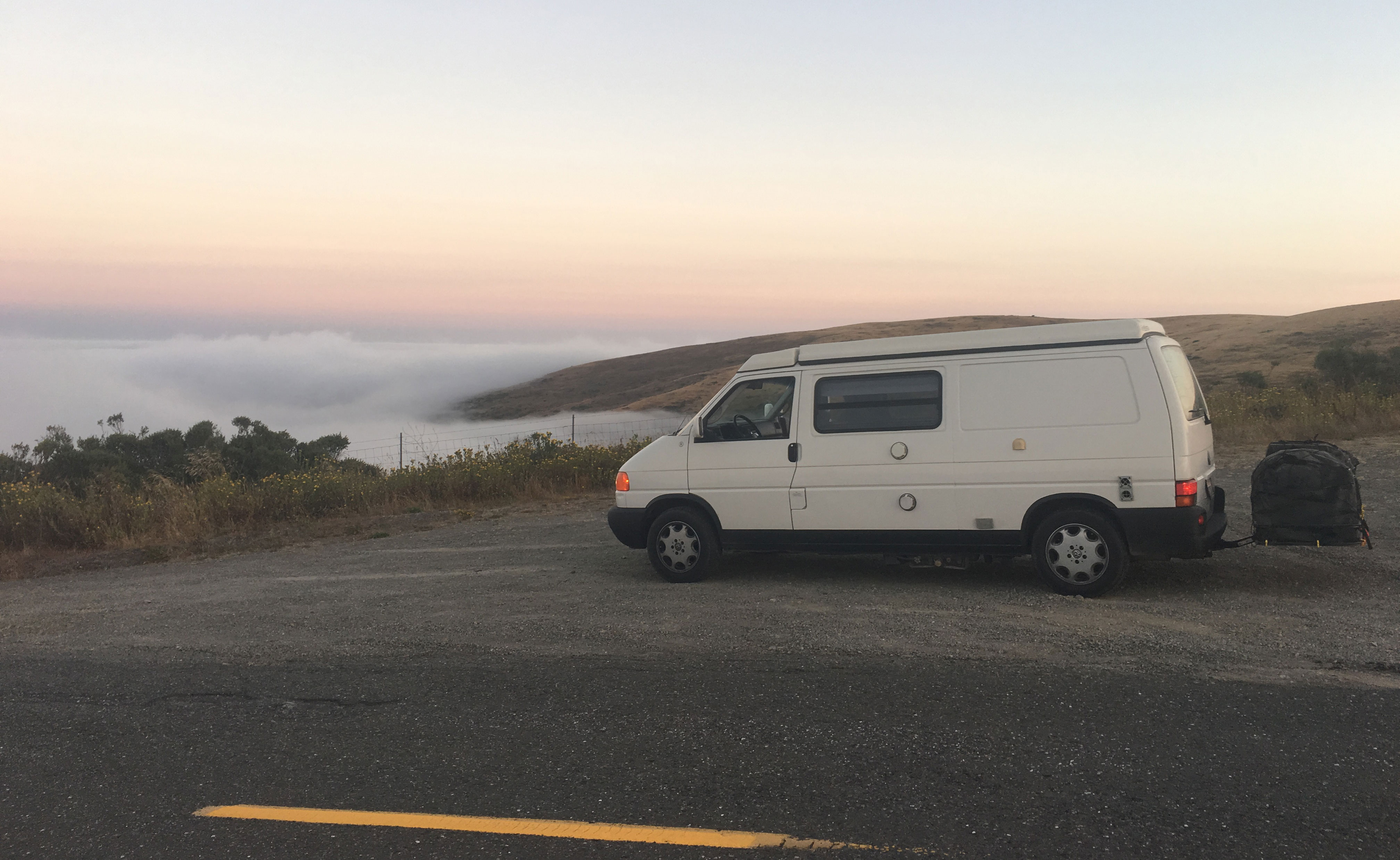
What does a day in the life of your research look like?
In short, early mornings and late nights! For Piper, a typical day looks something like this: we wake up sometime between 3:30am and 5am (depending on when the low tide is) and head out to our site. Once at the site, we lay out transect tapes (essentially giant rulers that can be rolled up) and we use quadrats (a big square made out of PVC pipes) to describe where her species of interest are living in the intertidal. After we are done, around 5 or so hours later, we come back to our van, eat breakfast, clean off our gear and then typically take a long nap.
My typical day is a bit different. We head out to the tide pools during a daytime and nighttime low tide at each site. (So far we have been to Monterey, California; Bodega Bay, California; and now Bob Creek, Oregon—we will also work at Little Corona in Southern California.) We work during the day (~6am to noon) and night (~10pm to 5am) so that we can capture both photosynthesis by marine algae and plants (daytime only) and respiration by animals (day and night). During each six-hour stint, we collect water every hour for the entire low tide in 15 pools for different types of water chemistry, some of which I can analyze right in the field, but a lot of which has to be brought back to UC Irvine to be processed. At the end of the trip I will have collected 600 pounds of water! It is quite an intense endeavor, but it is fun and will yield some hopefully exciting results. Plus, at night, we get to see some animals that are typically not active during the day.
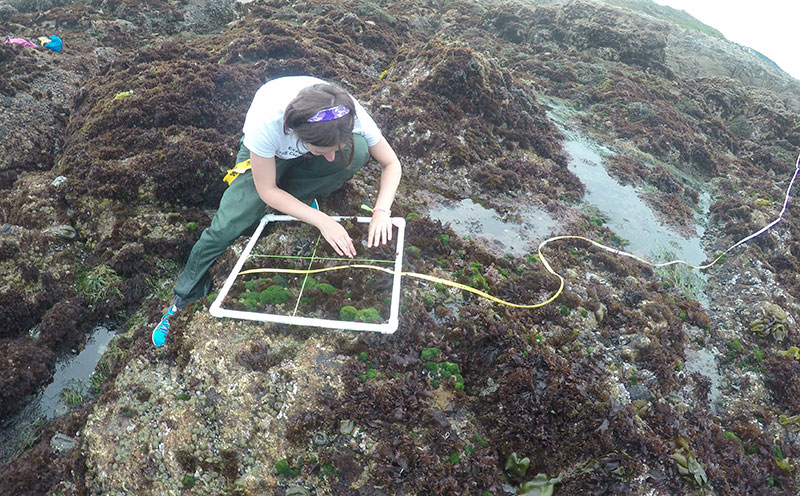
How have your experiences as a Nancy Foster Scholar informed this project?
Being a Nancy Foster Scholar has had a huge influence on this project, and, really, my general outlook on research and marine conservation. I knew that once I graduated [from the University of Hawai'i at Mānoa] that I had to continue to work in our national marine sanctuaries. They provide the greatest platform for both research and interacting with the public. I feel very lucky to continue to have the opportunity to work in such special places.
Which national marine sanctuaries are you conducting research in and why?
On this trip we are working in three national marine sanctuaries: Monterey Bay, Greater Farallones and Olympic Coast. We chose to work in these three sanctuaries because they all have intertidal communities located in no-take marine protected areas on the West Coast. This allows us to work with unaltered communities. We are also working at additional sites in Oregon and California that are outside sanctuary boundaries.
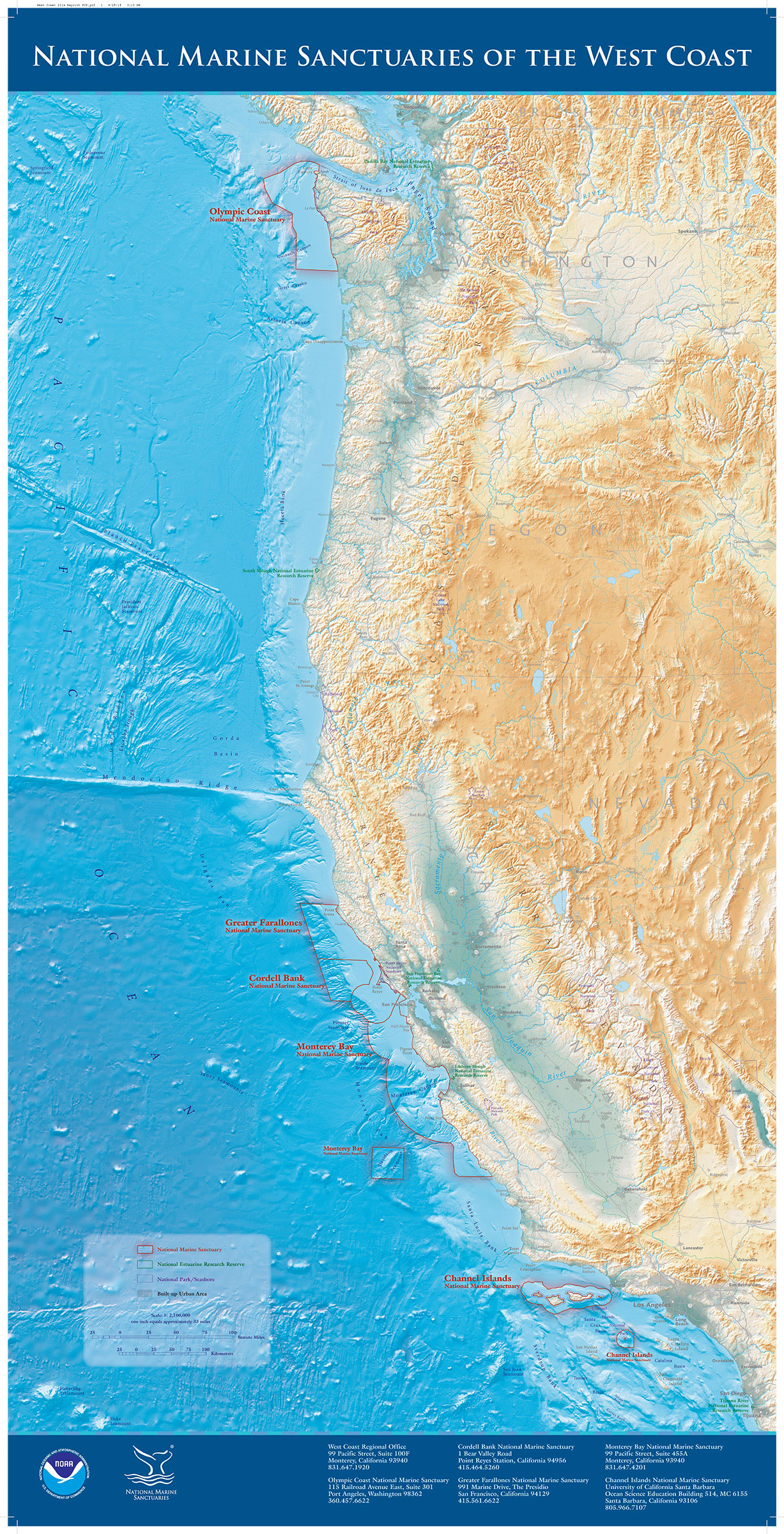
What are you and Piper looking to find out about national marine sanctuaries?
Piper is really interested in comparing the resiliency of marine protected areas in national marine sanctuary boundaries to other sites up and down the coast. It will be interesting to see if the interactions between predators and their prey shift in areas that are not protected.
I am researching how marine plants and animals change the chemical environment around them in tidepools. One of my hypotheses is that presence of marine algae may help reduce some of the climate change stressors that coastal organisms are dealing with (chiefly ocean acidification) because they take up carbon dioxide through a process called photosynthesis. If we find that intertidal algae can help to buffer climate change stressors along our coastlines we can use this information to better protect the ecosystems in our national marine sanctuaries.
What’s it like to work and research out of a camper van?
It’s amazing. I had never been in a camper van before this trip and now I wish I could have one for every time I travel. It makes our research sites so accessible and this trip much more affordable (thanks GoWesty!). Our van is a bed, a kitchen, a means of transportation, and a lab all in one. There is no better way to Science.
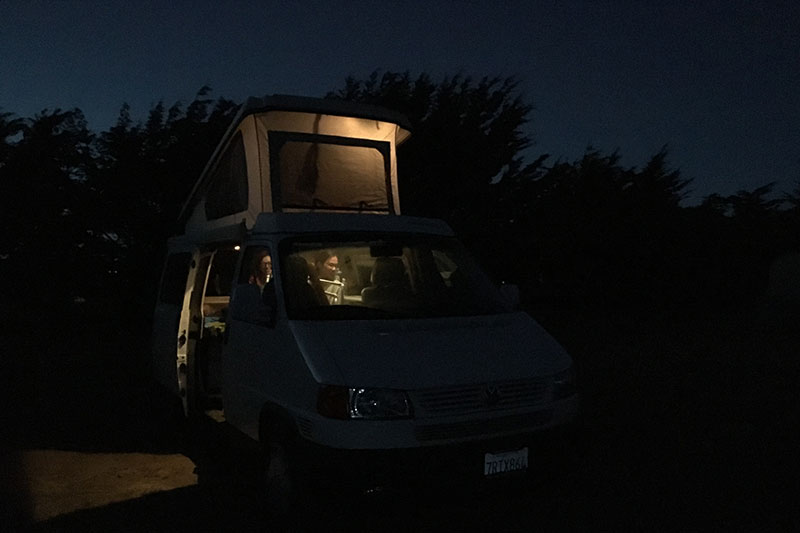
What’s the coolest thing you’ve seen so far on your expedition?
It’s so hard to choose just one! We have been really excited to see lots of sea star recruits up the coast. Sea stars had a massive die-off a few years back from sea star wasting syndrome so it was nice to see some of them coming back. We also had fun watching lots of otters just offshore during our sunset sampling in Monterey Bay.
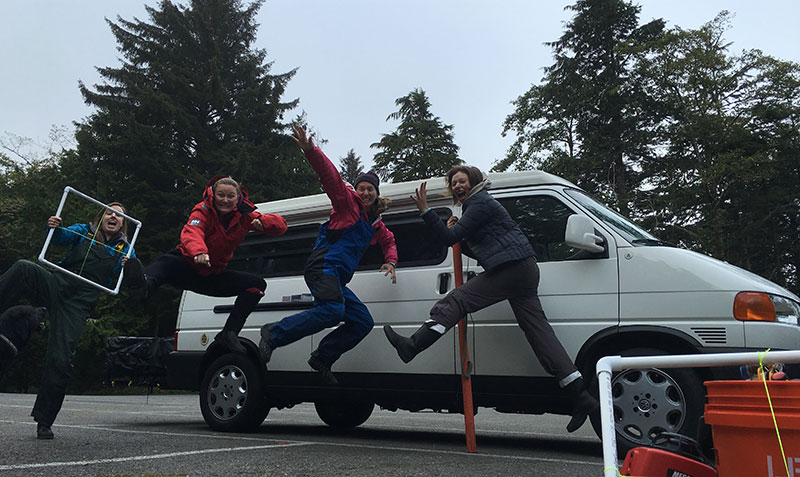
Learn more about Nyssa’s Biology Bus expedition here. Find out how you can become a Nancy Foster Scholar here.

